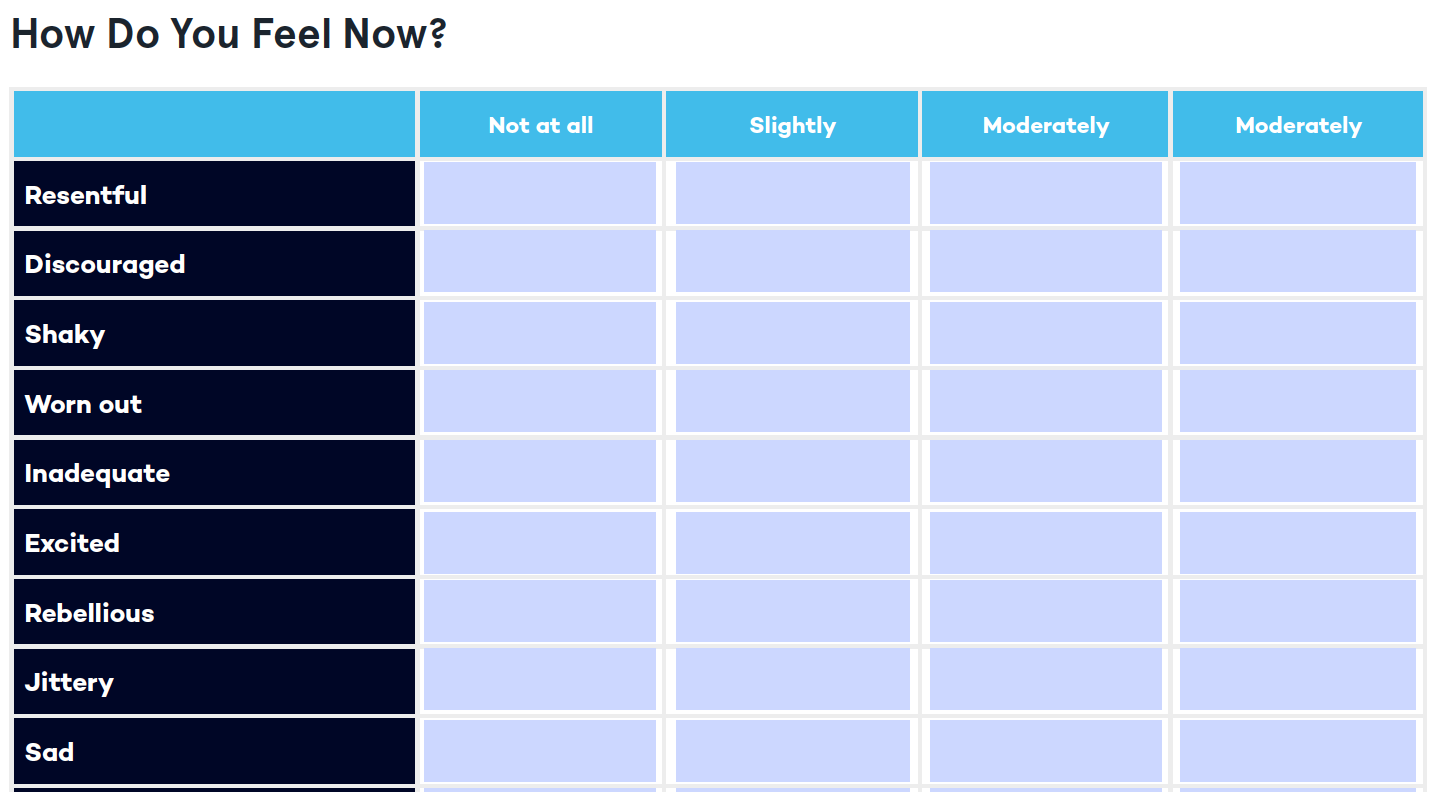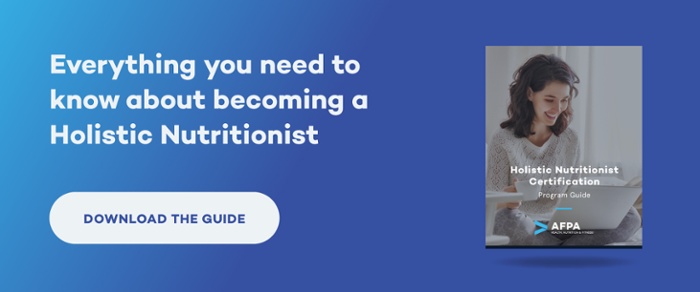As Coronavirus cases continue to rise on a national level, some states have decided to tighten restrictions, and some individuals are going back to staying at home.
What has emerged from this global health crisis is a new reality where many of our activities like working, enjoying family time, recreation, rest, and, of course, mealtimes and snack times are all occurring at home.
The combination of learning to build a somewhat structured, productive life while sheltering-in-place opens up some unprecedented challenges, including learning to eat healthily with limited pantry options and a mental health state that moves us to eat high-sugar and processed foods, frequently and in large quantities.
In these conditions, your clients might be struggling with following their meal plans and staying on track with their weight goals.
As a health and wellness coach who has never coached people in these conditions, you might be struggling to understand the mindset around diet and weight gain, muscle loss, and exercise while in quarantine. Even further, you might be having issues with how to coach people through their situation to come out healthier on the other side.
This article is a quick guide for health and wellness coaches to understand how staying at home indefinitely can influence how, when, and why we eat. We also provide concrete tips for how you can support your clients and continue to be their supporter as they make healthy choices in these new conditions.
Coach-Centered Tips for Helping Clients Stay on Track
Let Them Know You Empathize with Their Struggles
Empathy goes a long way in the coaching business.
In addition to the anxiety everyone is feeling due to the stay-at-home orders, the increasing number of cases in our neighborhoods, and having to keep up with work deadlines, your client might be feeling defeated or frustrated because they haven’t been able to keep up with their meal plan or exercise schedule.
Let your client know that what they are feeling and how they are responding is completely normal. If you feel comfortable with it, express to them how you have been feeling with everything that has been going on. Finally, remind them that they don’t need to feel alone and that you are there to support them so that they can feel confident with their food and exercise choices.
Do Emotional Check-Ins
Spending some time deliberately getting in tune with what you are feeling and the source of those feelings can help you piece apart how to best cope with them. Asking your clients to keep a “food and mood” journal, ideally one that they can fill out around the same time each day, can help them get in check with what they are feeling.
Another idea of an exercise you can carry our with your clients is the Emotional Eating Scale (EES). Health psychologists developed the EES to help individuals identify and separate the different factors that are influencing eating behaviors and food choices.
Applying the emotional eating scale could be a beneficial activity for you to carry out with your clients.
You can ask your client to fill out the emotional eating scale by himself or herself, or you can do it as an exercise together.
How will the EES help? Often, people confuse emotional eating with hunger, which can lead to overeating. Not only will it help your clients be more in tune with the emotions they are feeling and how these are affecting their food choices, but you will also come to understand your clients’ responses to food much better to make more pointed recommendations.
Below is a printable and sendable emotional eating scale worksheet adapted from Arnow, Kenardy, and Agras’s methodology, which you can use in your coaching practice.
Download Emotional Eating Scale Worksheet here

Create Food Checklists with Pantry Foods
Food checklists are a tool you can use to improve communication with your client regarding realistic food options during these trying times. They can help you build meal plans or food exchange lists that meet your clients’ budgetary needs, access limitations, and personal preferences.
As a plus, checklists can help you avoid potentially uncomfortable conversations about budgetary limitations.
You can give your client a weekly or monthly food checklist to fill out in their own time. When they send it back, you can use it to build a meal plan or food exchange list knowing that all of the foods you include are options for your clients.
Remember to include common shelf-stable pantry foods like canned or frozen vegetables and fruits, nuts, seeds, and dried snacks that your client may have on-hand during the quarantine. Let them know that in most cases, canned or frozen vegetables are acceptable alternatives when fresh vegetables aren’t available.
Help Them Build a Schedule
One of the most challenging parts about staying at home is that all your regular activities and commitments don’t stop. Moving in the same space twenty-four hours a day makes way for a scheduling disaster, where you work late into the night, spend much of the day chasing the kids around, and end up skipping meals altogether and grazing throughout the day instead.
Whether your client lives alone or whether they have three kids and a partner, a schedule benefits everyone. It gives the days and weekends structure, and from a meal perspective, it helps you plan time for cooking and eating.
Furthermore, remind clients to carve out time to exercise. Not only will it help them reap the benefits of physical activity for their health, but it will also help them relieve stress.
If you don’t provide a meal plan as part of your coaching services, encourage your clients to build their own weekly meal plans. These should be in-line with a realistic estimation of the time allotment for food prep and eating.
Help Your Clients Focus on the Experience of Eating (Eat Like the French)
Most of the modern world has wide access to calorie-dense, flavorful, and ready-to-eat foods like ultra-processed snacks and fast food. However, some cultures respond differently to the modern food environment. In the US, for example, there is a big focus on the health effects of food because we are aware of the ever-growing prevalence of overweight and obesity. Interestingly enough, the focus on the health effects of food over the experience of food might be one of the problems.
As a comparative example, France has the same access to processed and fast food, but the prevalence of obesity is nowhere near that of the US (42 percent as opposed to 10 percent in France). Why is this? Several researchers have compared the way Americans view food with how the French view food in search of answers to how to better approach food.
Researchers found that the main factor that influences the eating habits of French people is how they view food. While people in the US place a lot of focus on the health effects of eating, the French focus more on the experience of eating. The French:
- Spend more time eating, usually with others
- Focus on food in moderation
- Focus on quality (versus quantity)
- Emphasize the joys of the moment
- Eat smaller portions and snack less
Some would say that this approach is very similar to a mindful eating or intuitive eating approach.
By helping your clients enjoy the experience of eating, their mind is focused on the taste, aroma, and texture of the food and on the interaction with others as they eat, rather than on other stressors in the environment. At the same time that paying more attention to the experience of eating helps get their mind off the anxiety that surrounds the coronavirus pandemic, they are making the active connection in their brain that they are ingesting food, which will also help them feel fuller.
You can help your clients focus on the experience of eating by making the following three suggestions:
- Plan meals and their ingredients: Help your clients think about the foods they are making, the flavors and textures they will experience.
- Set a meal schedule: It gives clients structure in their day, gives them something to look forward to, and helps to avoid unplanned snacking.
- Start with small portions: Some people are so used to mindless eating and overeating that they are not aware of the sensation of feeling satisfied (rather than overfull). Eating in front of the TV, for example, can anchor hunger and eating behaviors to relaxing, which can interfere with normal hunger signaling. Here is a resource you can use to help your clients know when they are full and have had enough.
Remind Your Clients to Accept Their Emotions and Food Choices
The modern world has never experienced anything like the coronavirus pandemic before. It is unrealistic for any of us to expect that everything will work like clockwork. Anxiety, boredom, stress, and feeling overwhelmed are normal responses to the situation, and these emotions, together with physical and economic limitations, will undoubtedly have an impact on eating and exercise habits.
If they don’t follow their meal or exercise plans exactly, encourage your clients to accept that they are having a normal response to the situation. The feeling of guilt that can ensue from “breaking their diet” will only add to the anxiety that they are likely feeling. At the same time, ask them if they want your help to modify their habits to promote healthfulness. If they verbally express their desire to change their habits, offer encouraging words and tips and tools like the ones offered above to help get them there.
Become a Certified Holistic Nutritionist Online in 6 Months or Less
What Influences Food Choices While in Quarantine?
The factors that influence food choices while in quarantine aren’t necessarily different from the factors that influence food choices during the rest of our lifetimes. In other words, psychological, economic, and physiological factors have always and will always influence food choices.
The difference is that we have never lived through a time where we’ve collectively had to remove ourselves from traditional society to ensure our wellbeing.
As a result, it is naturally difficult for coaches to wrap their heads around the reasoning behind their clients’ food choices.
While there are numerous complex factors at play, here we describe five main factors that influence the food-related choices people make while in quarantine at home.
Physical Access to Food
To have the realistic option of eating food, you have to have physical access to that food. For example, imagine you have a craving for a Caesar salad. No matter how much you want it, if there isn’t any lettuce in the fridge and your groceries won’t be delivered until the next day, then you simply cannot make yourself a Caesar salad.
Why is this important to you as a coach? By being aware of what your clients have access to at home while they are in quarantine, you can make realistic recommendations for what they can and shouldn’t eat. It isn’t practical to recommend that your client eat a spinach and apple smoothie every morning if their local grocery store hasn’t been stocking spinach for three weeks.
What is the solution? It’s not as complicated as you might think. While building your client’s meal plan, you can ask them to take a look at the ingredients and make note if there is anything on the list they don’t have at home and cannot easily access. If there is, ask them if they have a close alternative or make suggestions and switch it out.
Another option is giving them a weekly or monthly checklist of foods where they can check off all of the food items they want to include in their meal plan. We will discuss these techniques in further detail below. Everything on the meal plan should be familiar and easy to access.
Cost and Budget-Related Factors
Related to physical access to food is economic access. Even if your local grocery store is well-stocked, if buying blueberries, kale, and organic salmon will put your client over budget, it isn’t realistic for him or her to carry out the meal plan sustainably.
Talking about economic limitations with your client can be difficult. The best way to address these issues is taking a similar approach to the one mentioned above. For example, if your business model includes providing food lists, you can ask a client, “Is there something on this food list that you cannot access for practical or cost-related reasons?” That way, your client can respond without specifying the reason for which a certain food may be difficult to access.
Emotional and Mental Health Factors
It is very important for coaches to consider the mental health and psychological factors that influence what we eat while in quarantine conditions.
The stress, anxiety, or boredom people are experiencing could have a significant influence on their food choice. In some people, certain emotional experiences lead them to eat more, while in others it makes them want to avoid food altogether.
Some of the emotions that influence eating habits include:
- Joy
- Resentment
- Excitement
- Discouragement
- Relief
- Shakiness
- Sadness
- Eagerness
- Uneasiness
- Worry
- Frustration
- Loneliness
- Boredom
Keep in mind that the relationship between chronic anxiety and food doesn’t always lead to weight gain. In some people, food-related anxiety together with the desire to be healthy and slim can lead to eating disorders like anorexia nervosa. If you suspect your client has a serious eating disorder, it is important to encourage him or her to seek help from a therapist or psychologist specialized in these areas.
Biological Factors
Out of the different factors mentioned here, this is perhaps the most straightforward. If we boil it all down, food is the tool our bodies use to meet biological needs. In addition to energy, food also provides molecular building blocks for tissue, components needed for hormones and intracellular communication, cofactors for enzymes to work properly, and thousands of other functions.
The sensation of hunger is the physiological response to our body’s need for nutritional components, while the sensation of fullness is (in general) the way our bodies tell us that we have had enough.
For the most part, biological factors generally will not alter significantly while in quarantine. Unless your client is performing more or less exercise or is ill, you can assume that biological needs have not changed significantly.
Social Factors
People don’t eat food simply out of biological inertia. Food is one of the most important expressions of culture, social connection, ethical considerations, attitudes, and beliefs.
Personal and family comfort foods are a great example of the social and emotional significance of food. Comfort foods are those that are associated with a relief of distress. Comfort foods fall into four main categories: nostalgic foods, indulgence foods, convenience foods, and physical comfort foods. When people choose comfort foods, they are putting the experience of eating, the memories foods bring, and the immediate sensations over the impacts of food on nutrition and health. The role of comfort foods is so powerful for some people that it is even viewed as a form of self-medication.
In a situation of chronic stress like some people may be experiencing while at home, your clients may be eating comfort foods more often. Since most comfort foods tend to be highly caloric and sugary, the overconsumption of comfort foods may lead to weight gain.
Other social factors include the autonomy people have to choose their food. For example, if your client is not the one who cooks at home or buys the food in quarantine, he or she may have had to negotiate choices regarding what to eat.
As a health and wellness coach, you may want to have a discussion with your client to identify the different social factors that may be influencing their eating habits. Remind them that the social factors that are influencing their eating and exercise habits while in quarantine may be very different from the factors that normally influence their eating choices.
Main Takeaways
cThe COVID-19 pandemic has come to change our lives abruptly. Just as it has likely had multiple effects on your life, it will have also affected your clients’ lives.
The current situation offers a great opportunity for you as a health coach—you can help clients navigate their new circumstances and still help them prioritize their health. Offer useful and practical knowledge and tools they can use to understand why their diet and routine has changed and help them adapt their needs to get back on track.
Ultimately, however, remember to empathize with your clients. The human connection you forge with them may make a significant difference in how they cope with the stress and anxiety that is affecting their eating habits.




